Abstract
Studies of perinatal exposures to dioxin-like compounds (DLCs), coplanar polycyclic halogenated aromatics whose prototype is 2,3,7,8-tetrachlorodibenzo-p-dioxin (TCDD), have employed a variety of outcome measures to investigate effects on the reproductive/developmental, endocrine, immune, and neurobehavioral systems. The effects include infertility, growth retardation, fetal loss, changed sexual differentiation, reduced cognitive/motor function, dermatologic and other ectodermal effects, and decreased immune response. Significant biomarkers have included sperm count; CD4/CD8 ratio; and levels of testosterone, T4, and dopamine. Using specific dioxin or PCB congeners, these and other markers were used to investigate the mechanisms of the observed effects. The DLCs, which include some PCB congeners, are characterized by high-affinity binding to the Ah receptor; most biological effects are thought to be mediated by the ligand-Ah receptor complex. Other PCB congeners have low affinity for the Ah receptor, and operate by non-Ah receptor mechanisms. The biologic activity of a PCB mixture is the sum of the agonist and antagonist activities of the different constituents in the mixture. Animal studies with specific PCB congeners can help to clarify these activities. With similar approaches, biologic markers of effect can be developed and applied in epidemiologic studies to monitor for, and predict, adverse effects in humans.
Full text
PDF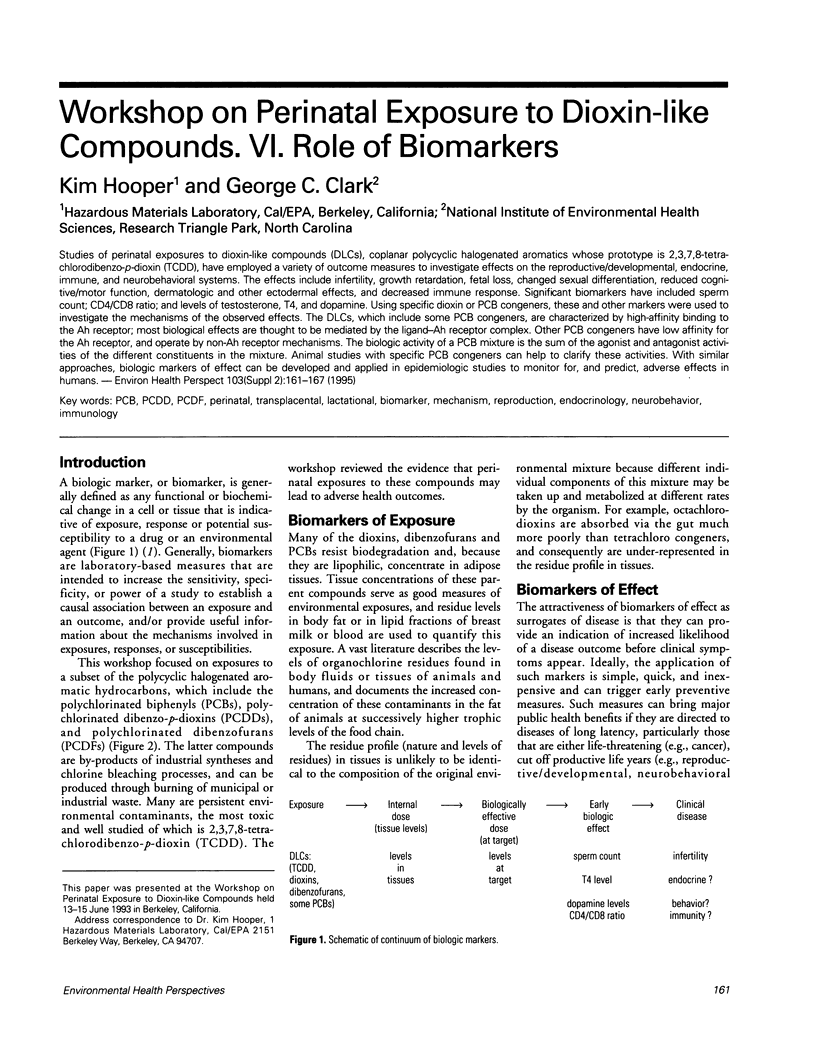
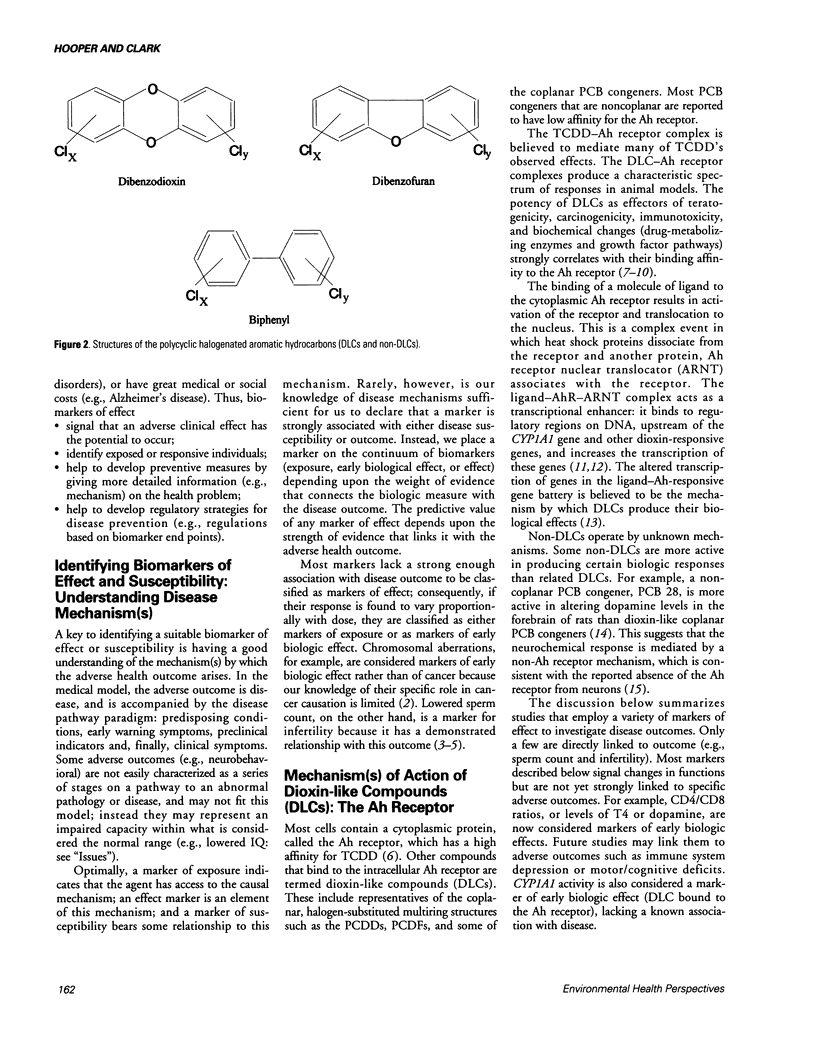
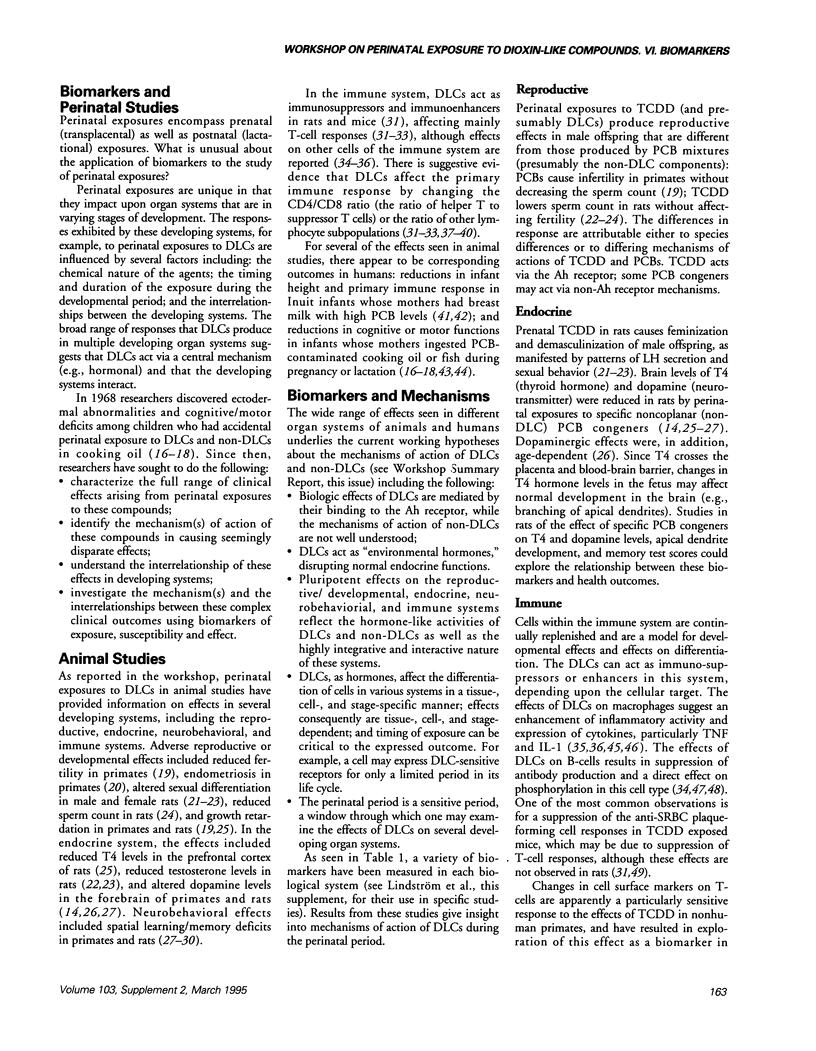
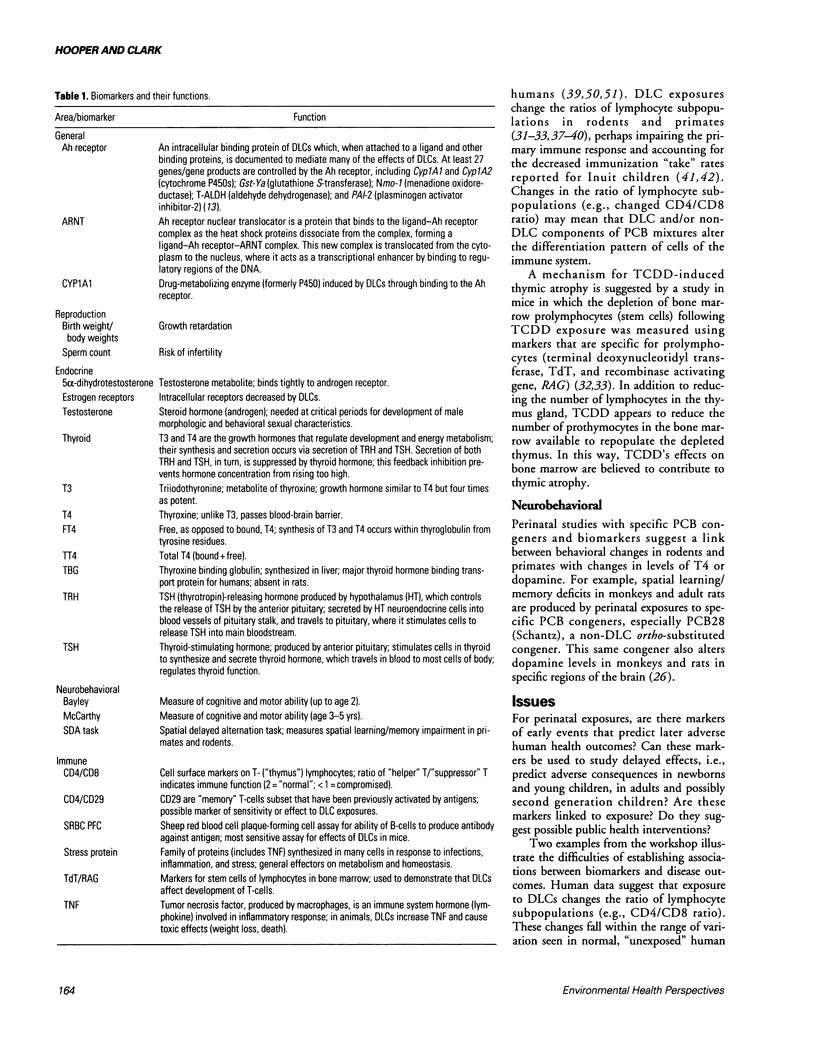
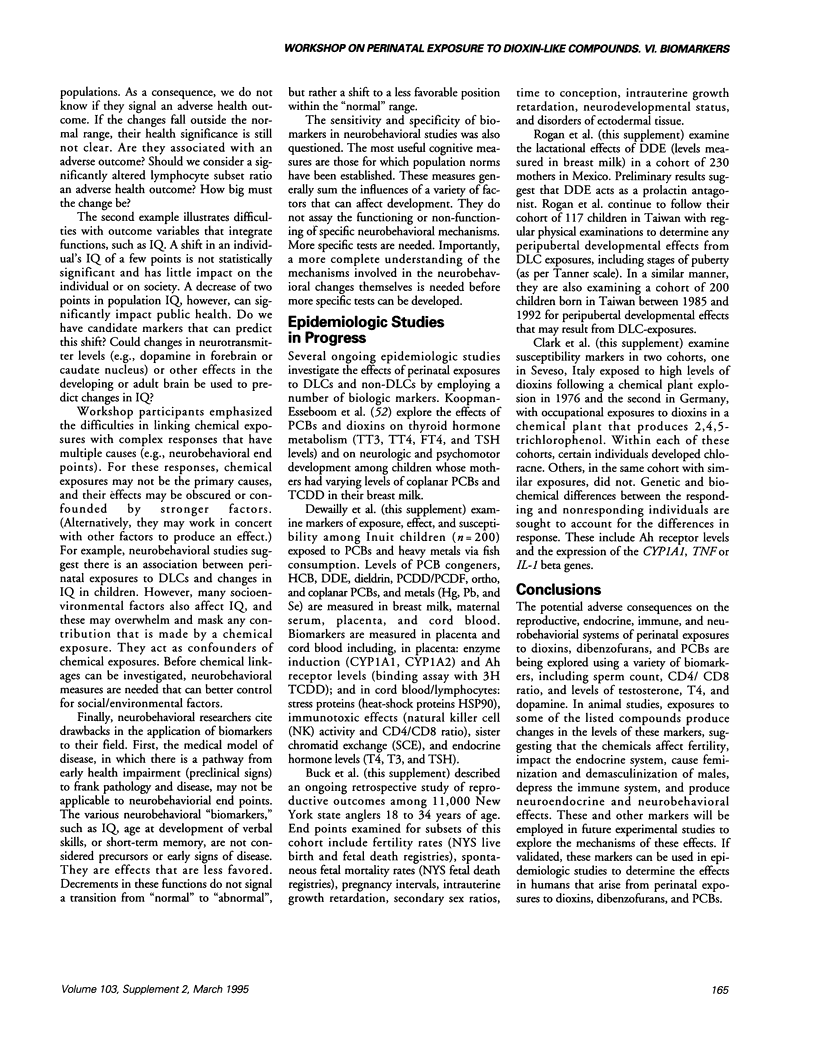
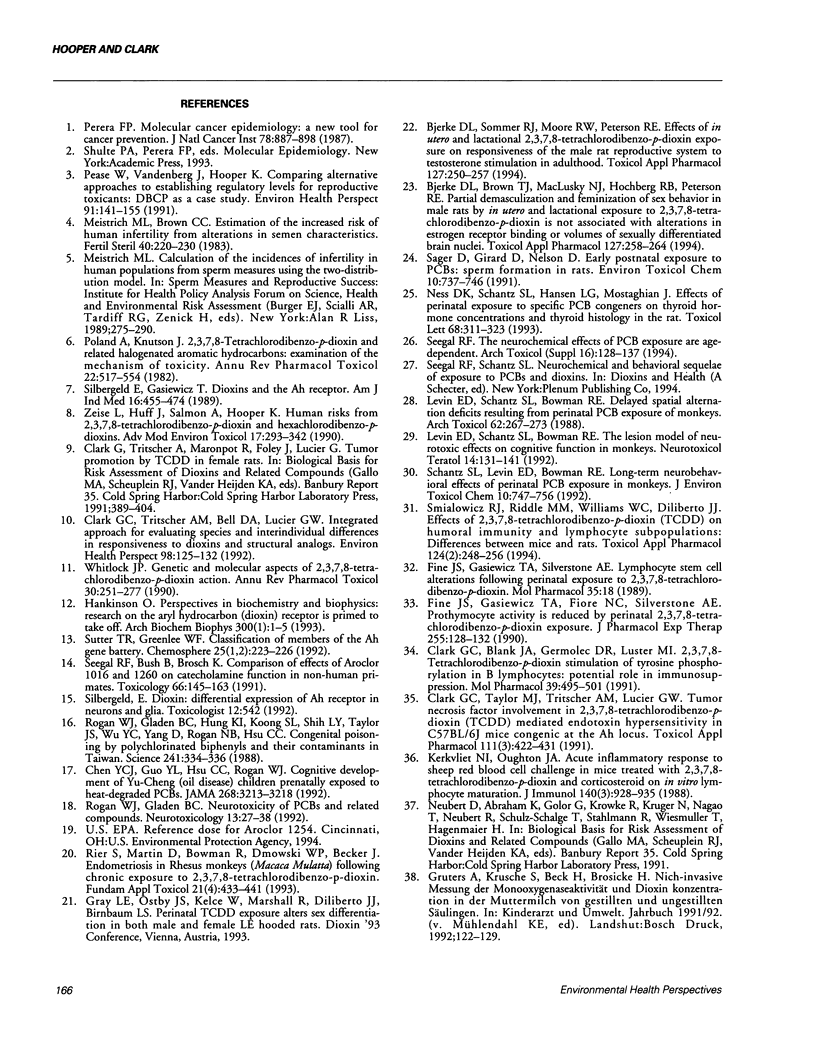
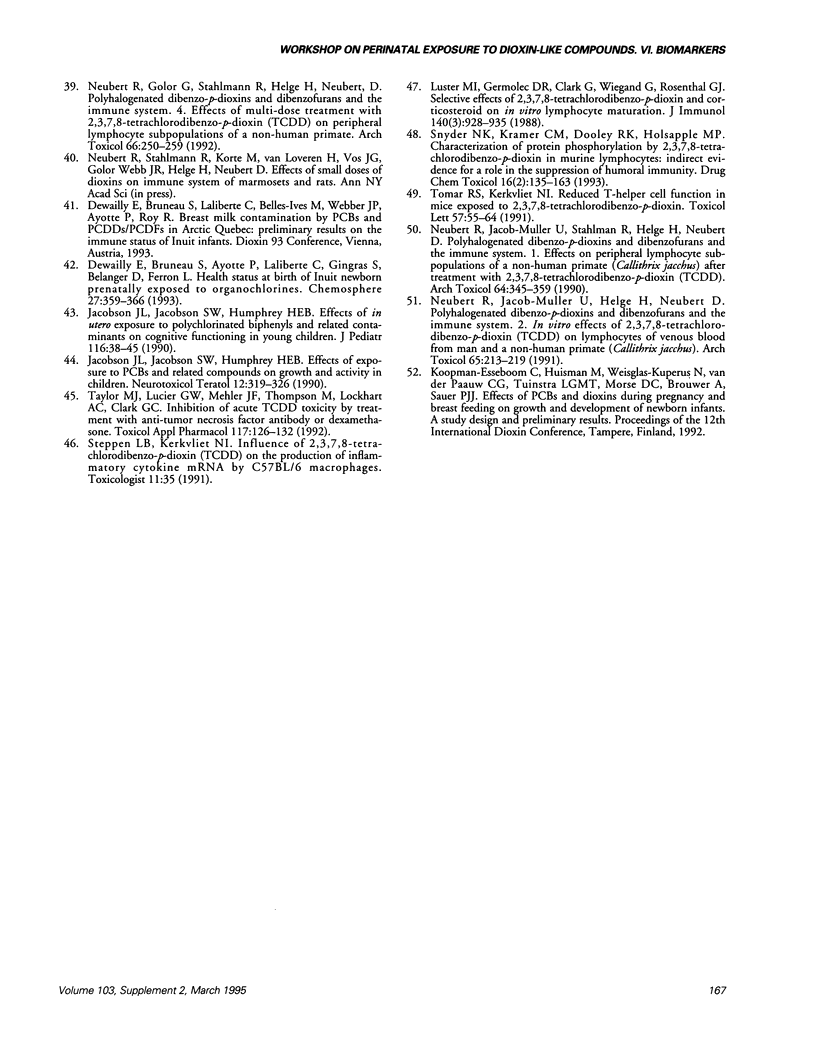
Selected References
These references are in PubMed. This may not be the complete list of references from this article.
- Bjerke D. L., Brown T. J., MacLusky N. J., Hochberg R. B., Peterson R. E. Partial demasculinization and feminization of sex behavior in male rats by in utero and lactational exposure to 2,3,7,8-tetrachlorodibenzo-p-dioxin is not associated with alterations in estrogen receptor binding or volumes of sexually differentiated brain nuclei. Toxicol Appl Pharmacol. 1994 Aug;127(2):258–267. doi: 10.1006/taap.1994.1160. [DOI] [PubMed] [Google Scholar]
- Bjerke D. L., Sommer R. J., Moore R. W., Peterson R. E. Effects of in utero and lactational 2,3,7,8-tetrachlorodibenzo-p-dioxin exposure on responsiveness of the male rat reproductive system to testosterone stimulation in adulthood. Toxicol Appl Pharmacol. 1994 Aug;127(2):250–257. doi: 10.1006/taap.1994.1159. [DOI] [PubMed] [Google Scholar]
- Chen Y. C., Guo Y. L., Hsu C. C., Rogan W. J. Cognitive development of Yu-Cheng ("oil disease") children prenatally exposed to heat-degraded PCBs. JAMA. 1992 Dec 9;268(22):3213–3218. [PubMed] [Google Scholar]
- Clark G. C., Blank J. A., Germolec D. R., Luster M. I. 2,3,7,8-Tetrachlorodibenzo-p-dioxin stimulation of tyrosine phosphorylation in B lymphocytes: potential role in immunosuppression. Mol Pharmacol. 1991 Apr;39(4):495–501. [PubMed] [Google Scholar]
- Clark G. C., Taylor M. J., Tritscher A. M., Lucier G. W. Tumor necrosis factor involvement in 2,3,7,8-tetrachlorodibenzo-p-dioxin-mediated endotoxin hypersensitivity in C57BL/6J mice congenic at the Ah locus. Toxicol Appl Pharmacol. 1991 Dec;111(3):422–431. doi: 10.1016/0041-008x(91)90247-c. [DOI] [PubMed] [Google Scholar]
- Clark G., Tritscher A., Bell D., Lucier G. Integrated approach for evaluating species and interindividual differences in responsiveness to dioxins and structural analogs. Environ Health Perspect. 1992 Nov;98:125–132. doi: 10.1289/ehp.9298125. [DOI] [PMC free article] [PubMed] [Google Scholar]
- Fine J. S., Gasiewicz T. A., Fiore N. C., Silverstone A. E. Prothymocyte activity is reduced by perinatal 2,3,7,8-tetrachlorodibenzo-p-dioxin exposure. J Pharmacol Exp Ther. 1990 Oct;255(1):128–132. [PubMed] [Google Scholar]
- Fine J. S., Gasiewicz T. A., Silverstone A. E. Lymphocyte stem cell alterations following perinatal exposure to 2,3,7,8-tetrachlorodibenzo-p-dioxin. Mol Pharmacol. 1989 Jan;35(1):18–25. [PubMed] [Google Scholar]
- Hankinson O. Research on the aryl hydrocarbon (dioxin) receptor is primed to take off. Arch Biochem Biophys. 1993 Jan;300(1):1–5. doi: 10.1006/abbi.1993.1001. [DOI] [PubMed] [Google Scholar]
- Jacobson J. L., Jacobson S. W., Humphrey H. E. Effects of exposure to PCBs and related compounds on growth and activity in children. Neurotoxicol Teratol. 1990 Jul-Aug;12(4):319–326. doi: 10.1016/0892-0362(90)90050-m. [DOI] [PubMed] [Google Scholar]
- Jacobson J. L., Jacobson S. W., Humphrey H. E. Effects of in utero exposure to polychlorinated biphenyls and related contaminants on cognitive functioning in young children. J Pediatr. 1990 Jan;116(1):38–45. doi: 10.1016/s0022-3476(05)81642-7. [DOI] [PubMed] [Google Scholar]
- Levin E. D., Schantz S. L., Bowman R. E. Delayed spatial alternation deficits resulting from perinatal PCB exposure in monkeys. Arch Toxicol. 1988;62(4):267–273. doi: 10.1007/BF00332486. [DOI] [PubMed] [Google Scholar]
- Levin E. D., Schantz S. L., Bowman R. E. Use of the lesion model for examining toxicant effects on cognitive behavior. Neurotoxicol Teratol. 1992 Mar-Apr;14(2):131–141. doi: 10.1016/0892-0362(92)90061-e. [DOI] [PubMed] [Google Scholar]
- Luster M. I., Germolec D. R., Clark G., Wiegand G., Rosenthal G. J. Selective effects of 2,3,7,8-tetrachlorodibenzo-p-dioxin and corticosteroid on in vitro lymphocyte maturation. J Immunol. 1988 Feb 1;140(3):928–935. [PubMed] [Google Scholar]
- Luster M. I., Germolec D. R., Clark G., Wiegand G., Rosenthal G. J. Selective effects of 2,3,7,8-tetrachlorodibenzo-p-dioxin and corticosteroid on in vitro lymphocyte maturation. J Immunol. 1988 Feb 1;140(3):928–935. [PubMed] [Google Scholar]
- Meistrich M. L., Brown C. C. Estimation of the increased risk of human infertility from alterations in semen characteristics. Fertil Steril. 1983 Aug;40(2):220–230. doi: 10.1016/s0015-0282(16)47241-9. [DOI] [PubMed] [Google Scholar]
- Ness D. K., Schantz S. L., Moshtaghian J., Hansen L. G. Effects of perinatal exposure to specific PCB congeners on thyroid hormone concentrations and thyroid histology in the rat. Toxicol Lett. 1993 Jun;68(3):311–323. doi: 10.1016/0378-4274(93)90023-q. [DOI] [PubMed] [Google Scholar]
- Neubert R., Golor G., Stahlmann R., Helge H., Neubert D. Polyhalogenated dibenzo-p-dioxins and dibenzofurans and the immune system. 4. Effects of multiple-dose treatment with 2,3,7,8-tetrachlorodibenzo-p-dioxin (TCDD) on peripheral lymphocyte subpopulations of a non-human primate (Callithrix jacchus). Arch Toxicol. 1992;66(4):250–259. doi: 10.1007/BF02307170. [DOI] [PubMed] [Google Scholar]
- Neubert R., Jacob-Müller U., Helge H., Stahlmann R., Neubert D. Polyhalogenated dibenzo-p-dioxins and dibenzofurans and the immune system. 2. In vitro effects of 2,3,7,8-tetrachlorodibenzo-p-dioxin (TCDD) on lymphocytes of venous blood from man and a non-human primate (Callithrix jacchus). Arch Toxicol. 1991;65(3):213–219. doi: 10.1007/BF02307311. [DOI] [PubMed] [Google Scholar]
- Neubert R., Jacob-Müller U., Stahlmann R., Helge H., Neubert D. Polyhalogenated dibenzo-p-dioxins and dibenzofurans and the immune system. 1. Effects on peripheral lymphocyte subpopulations of a non-human primate (Callithrix jacchus) after treatment with 2,3,7,8-tetrachlorodibenzo-p-dioxin (TCDD). Arch Toxicol. 1990;64(5):345–359. doi: 10.1007/BF01973455. [DOI] [PubMed] [Google Scholar]
- Pease W., Vandenberg J., Hooper K. Comparing alternative approaches to establishing regulatory levels for reproductive toxicants: DBCP as a case study. Environ Health Perspect. 1991 Feb;91:141–155. doi: 10.1289/ehp.9191141. [DOI] [PMC free article] [PubMed] [Google Scholar]
- Perera F. P. Molecular cancer epidemiology: a new tool in cancer prevention. J Natl Cancer Inst. 1987 May;78(5):887–898. [PubMed] [Google Scholar]
- Poland A., Knutson J. C. 2,3,7,8-tetrachlorodibenzo-p-dioxin and related halogenated aromatic hydrocarbons: examination of the mechanism of toxicity. Annu Rev Pharmacol Toxicol. 1982;22:517–554. doi: 10.1146/annurev.pa.22.040182.002505. [DOI] [PubMed] [Google Scholar]
- Rier S. E., Martin D. C., Bowman R. E., Dmowski W. P., Becker J. L. Endometriosis in rhesus monkeys (Macaca mulatta) following chronic exposure to 2,3,7,8-tetrachlorodibenzo-p-dioxin. Fundam Appl Toxicol. 1993 Nov;21(4):433–441. doi: 10.1006/faat.1993.1119. [DOI] [PubMed] [Google Scholar]
- Rogan W. J., Gladen B. C., Hung K. L., Koong S. L., Shih L. Y., Taylor J. S., Wu Y. C., Yang D., Ragan N. B., Hsu C. C. Congenital poisoning by polychlorinated biphenyls and their contaminants in Taiwan. Science. 1988 Jul 15;241(4863):334–336. doi: 10.1126/science.3133768. [DOI] [PubMed] [Google Scholar]
- Rogan W. J., Gladen B. C. Neurotoxicology of PCBs and related compounds. Neurotoxicology. 1992 Spring;13(1):27–35. [PubMed] [Google Scholar]
- Seegal R. F., Bush B., Brosch K. O. Comparison of effects of Aroclors 1016 and 1260 on non-human primate catecholamine function. Toxicology. 1991 Feb;66(2):145–163. doi: 10.1016/0300-483x(91)90215-m. [DOI] [PubMed] [Google Scholar]
- Seegal R. F. The neurochemical effects of PCB exposure are age-dependent. Arch Toxicol Suppl. 1994;16:128–137. doi: 10.1007/978-3-642-78640-2_15. [DOI] [PubMed] [Google Scholar]
- Silbergeld E. K., Gasiewicz T. A. Dioxins and the Ah receptor. Am J Ind Med. 1989;16(4):455–474. doi: 10.1002/ajim.4700160411. [DOI] [PubMed] [Google Scholar]
- Smialowicz R. J., Riddle M. M., Williams W. C., Diliberto J. J. Effects of 2,3,7,8-tetrachlorodibenzo-p-dioxin (TCDD) on humoral immunity and lymphocyte subpopulations: differences between mice and rats. Toxicol Appl Pharmacol. 1994 Feb;124(2):248–256. doi: 10.1006/taap.1994.1029. [DOI] [PubMed] [Google Scholar]
- Snyder N. K., Kramer C. M., Dooley R. K., Holsapple M. P. Characterization of protein phosphorylation by 2,3,7,8-tetrachlorodibenzo-p-dioxin in murine lymphocytes: indirect evidence for a role in the suppression of humoral immunity. Drug Chem Toxicol. 1993;16(2):135–163. doi: 10.3109/01480549309031993. [DOI] [PubMed] [Google Scholar]
- Taylor M. J., Lucier G. W., Mahler J. F., Thompson M., Lockhart A. C., Clark G. C. Inhibition of acute TCDD toxicity by treatment with anti-tumor necrosis factor antibody or dexamethasone. Toxicol Appl Pharmacol. 1992 Nov;117(1):126–132. doi: 10.1016/0041-008x(92)90227-j. [DOI] [PubMed] [Google Scholar]
- Tomar R. S., Kerkvliet N. I. Reduced T-helper cell function in mice exposed to 2,3,7,8-tetrachlorodibenzo-p-dioxin (TCDD). Toxicol Lett. 1991 Jun;57(1):55–64. doi: 10.1016/0378-4274(91)90119-q. [DOI] [PubMed] [Google Scholar]
- Whitlock J. P., Jr Genetic and molecular aspects of 2,3,7,8-tetrachlorodibenzo-p-dioxin action. Annu Rev Pharmacol Toxicol. 1990;30:251–277. doi: 10.1146/annurev.pa.30.040190.001343. [DOI] [PubMed] [Google Scholar]


